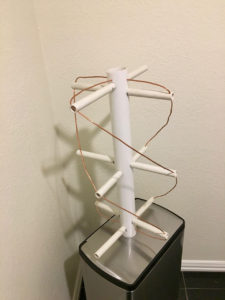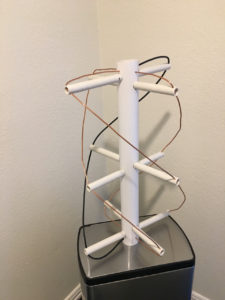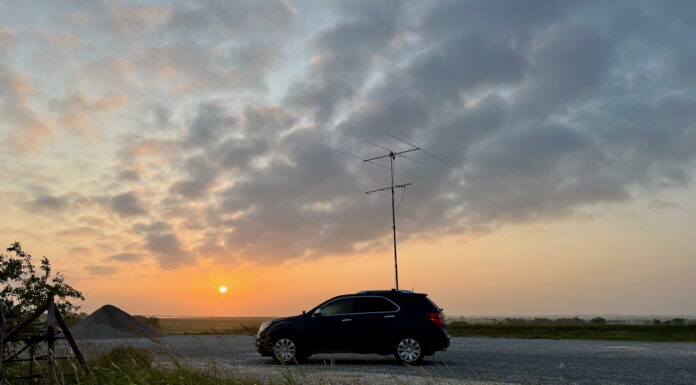The name is actually outstanding and the promise of omnidirectional coverage sounds pretty good, too. Plus, when my wife saw me with this twisted metal PVC pipe contraption, she said “That’s my dude.” I think that was a compliment…
So, what’s not to like about a Quadrifilar Helix Antenna? To hear it from me, a fair bit.
This project began with a desire to stick something in the attic that would cover satellites at the very high elevations that are lost with my fixed elevation yagis. Actually, it had been calling to me ever since I saw the W3KH Quadrifilar Helix Antenna in the ARRL Satellite Handbook. It’s a cool looking antenna.
Since the original write up came from QST, I looked it up in the archives. My search revealed that the article originally ran in August 1996 but with two corrections published in June 1999 and September 1999. That’s where a bit of confusion and apprehension started.
The June correction swapped two connections in one illustration. The September correction said no not that illustration but another illustration. On top of that the handbook illustrations made the swaps in both illustrations. What could go wrong? Or better said, what has gone wrong?
Doing some search on the web revealed that many are following the original article without making any corrections at all. The author also notes how challenging it is to present the antenna via illustrations that provide clear insight into its construction. I can vouch for that. But he makes a very good effort.
Even with all this, I sallied forth and hacked up some PVC, measured the copper wire to the measures provided in the article for 2 meters, and pulled it all together. What worked for me was leaving the cross members unglued until after everything was assembled. That helped with lining up the holes for wires and coaxial cable.
However, one further troubling item was the provided measurements that went down to the hundredth of an inch. It reminded me of the phrase:
Measure with a micrometer. Mark with a grease pencil. Cut with an axe.
Except for the fact that I used a tape measure, marked it with a pencil, and cut with some diagonal pliers. Plus, my drilling lacked the semi-precision of a drill press — just a Stanley bench and hand drill. So if it doesn’t work all that well, it could very well be a problem with the hired hand.
The other downside is that I don’t have an antenna analyzer that covers 2 meters. That might give me a much better clue of how far off frequency this antenna may have ended up. It does receive satellites, but not very well at all. Testing with the AO-73 telemetry signal resulted in no decodes for at 44 degree pass. That doesn’t work. I will note that it does receive local FM repeaters reasonably well. But that isn’t the goal.
It’s been an interesting construction project. But I will probably put it away for another day. Perhaps the day I acquire an antenna analyser and can examine its tuning more closely.
If you’ve had better experiences with such an antenna, I’d enjoy hearing about it. Let me know how yours works.









